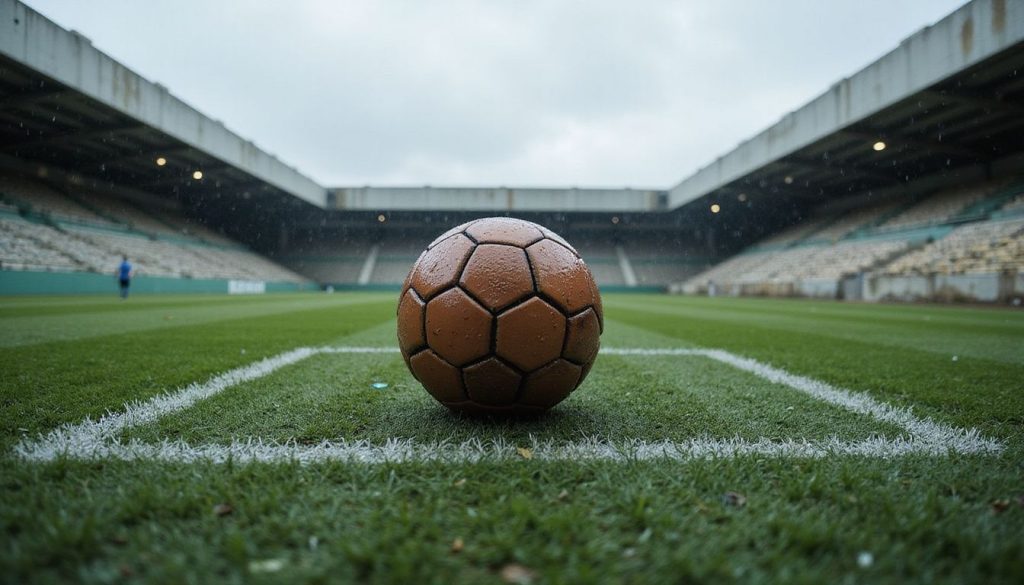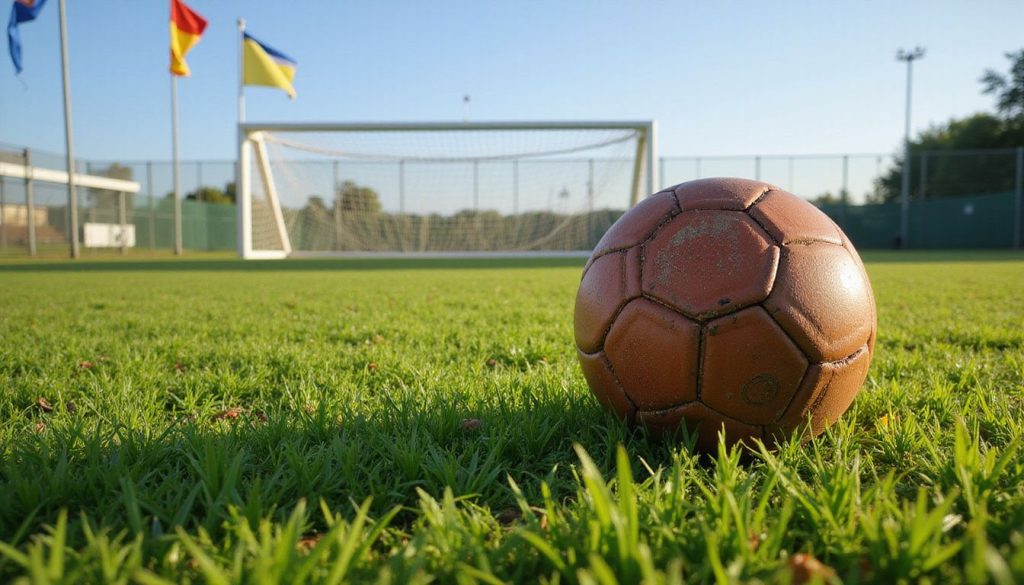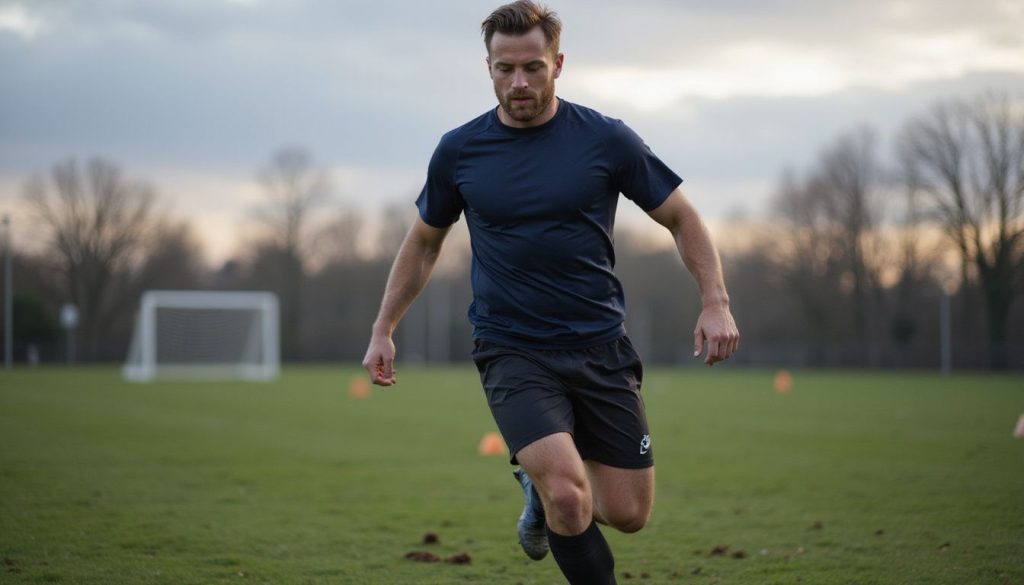Agility Cone Drills For Football
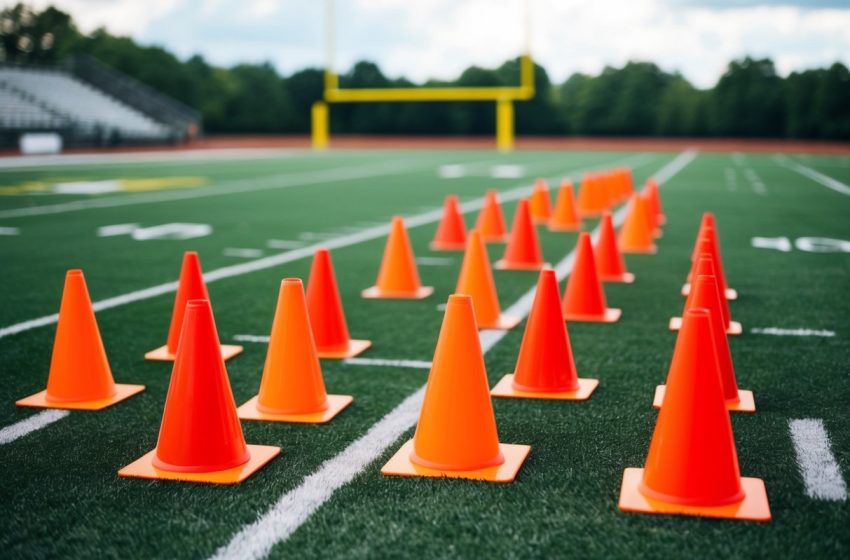
Agility Cone Drills for Football: Boost Speed, Control, and Game Performance
If you want to become faster and more responsive on the football field, agility cone drills are one of the best ways to improve your footwork, speed, and quick direction changes. Using cone drills helps you build the skills needed to outmaneuver opponents and become a more balanced and confident player.
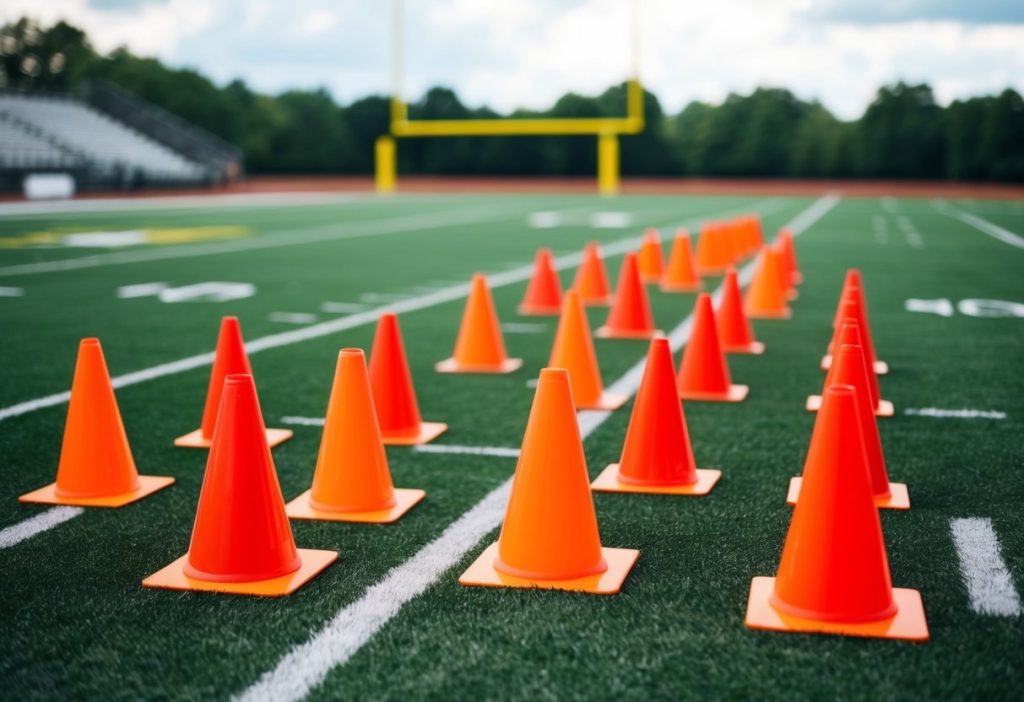
These drills are easy to set up and can be done anywhere you have some open space. You’ll see your movement get sharper, your balance improve, and your reaction times get quicker, making you a real asset during games.
Whether you play as a receiver, defender, or lineman, adding agility cone drills to your training can help you compete harder and play with more control. Try a few today and see how much your game improves.
What Are Agility Cone Drills for Football?
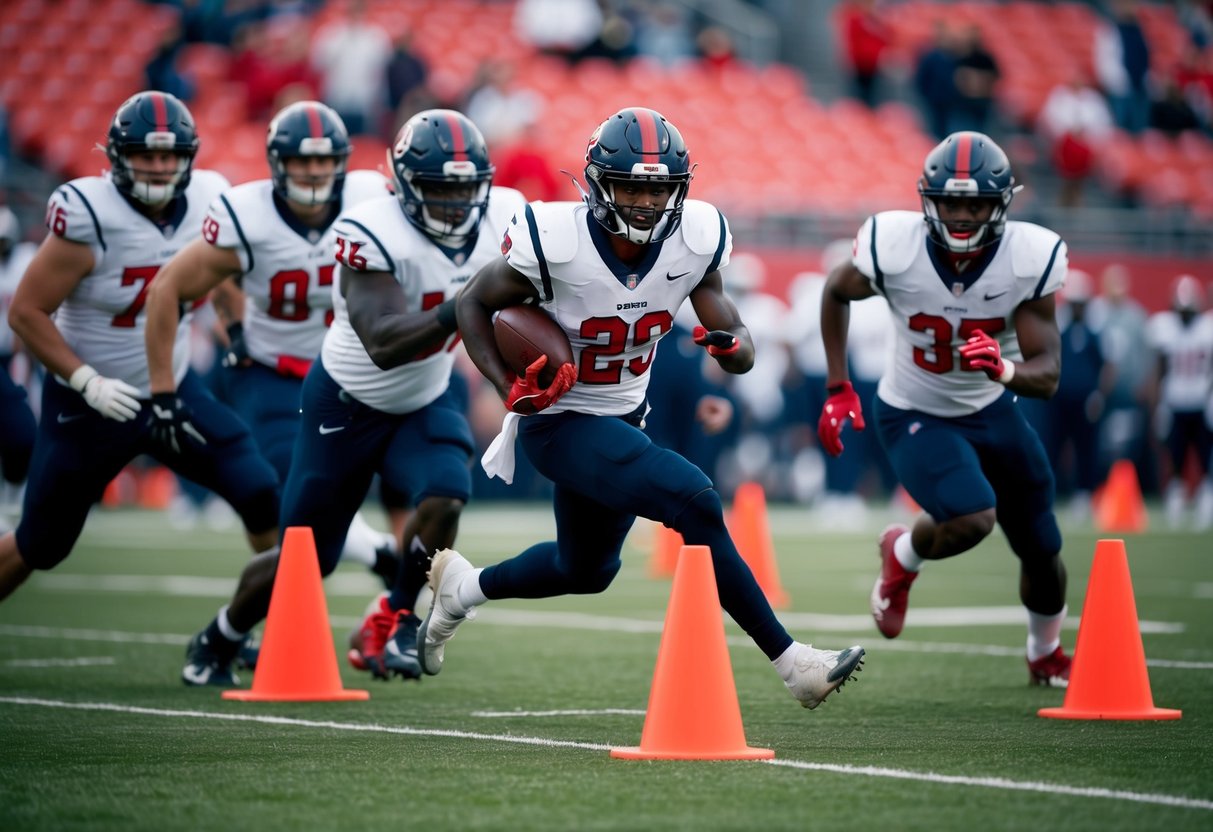
Agility cone drills are an important part of football training. They help you move faster, change direction quickly, and improve your control during a game.
Definition and Purpose
Agility cone drills use small cones placed in certain patterns to create paths that you run, shuffle, or backpedal through. The layout can be in a straight line, zigzag, or even in a loop shape.
These drills are made to test and improve how well you can change directions, speed up, and slow down on the field. You will find patterns like the “L-drill” or “3-cone drill” very common in football practices.
Coaches use agility cones because they give clear spots to move around. This lets you focus on quick cuts, balance, and tight turns, all skills you need to play football well.
Key Benefits for Football Players
Agility cone drills help you become more explosive and light on your feet. Doing these drills trains both your muscles and your mind to react faster and make sharp movements.
You will notice better footwork, which is important for dodging tackles or rushing through small openings. Your balance and coordination also get better as you must control your body while moving quickly around each cone.
Practicing with agility cones also reduces your risk of injury. You strengthen the ligaments and muscles that keep your knees and ankles safe, which is important in a fast sport like football.
Essential Equipment for Effective Drills
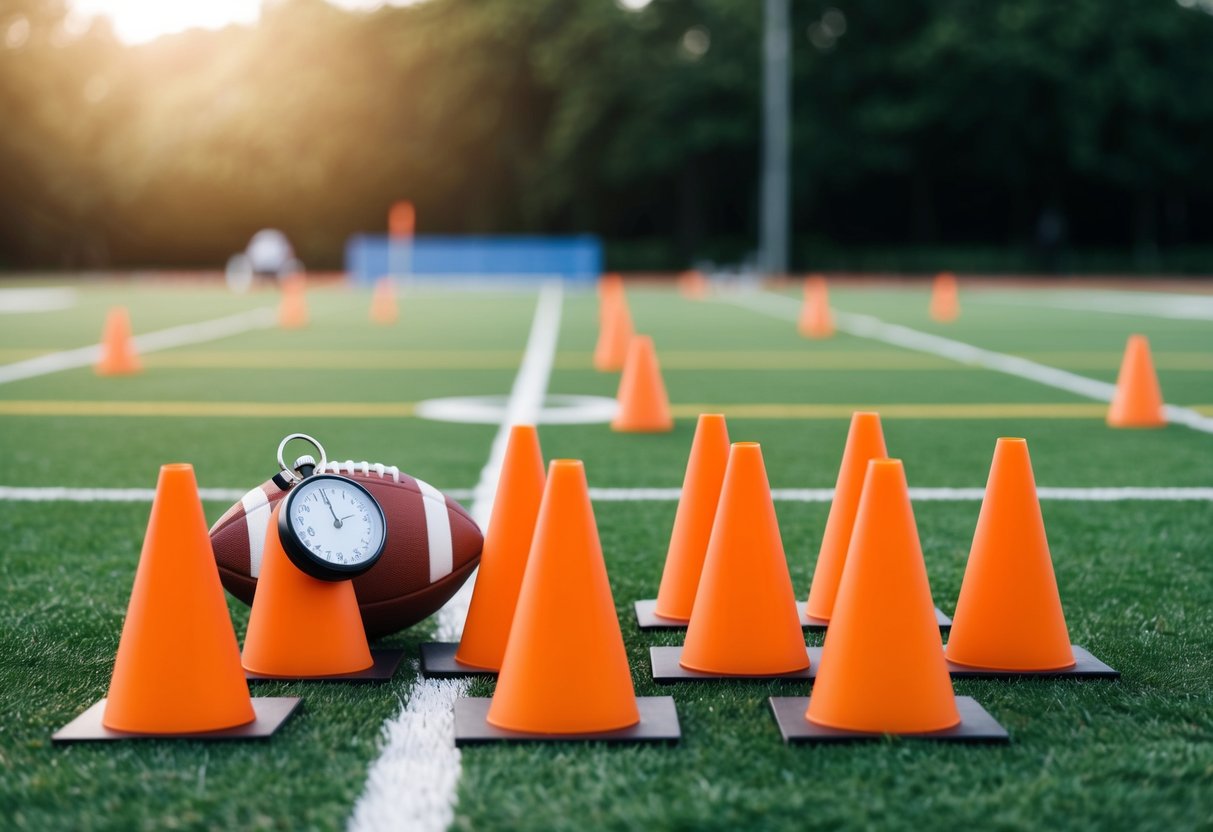
Using the right equipment makes football agility cone drills safer and more productive. Well-chosen cones and safe setups help players move freely and practice at full speed.
Choosing the Right Agility Cones
Picking the right agility cones makes your drills run smoothly. Look for cones that are durable, flexible, and easy to spot on the field. Bright colors like orange, yellow, or red help players see them quickly, even during fast drills. Cones that are made from soft plastic are best because they won’t hurt if someone trips over them or accidentally steps on one.
Size matters: small cones (about 2-6 inches tall) are great for close footwork and tight spaces, while taller cones (9-12 inches) are easier to see over longer distances. If you practice on grass, rubber-bottom cones stay in place better and won’t blow away in the wind.
Using different shapes, like dome or triangle cones, allows for a variety of drills. Some players also use discs or mini-cones for quick footwork patterns. Storing your cones in a carrier or mesh bag keeps your gear organized and ready for practice.
Safety Considerations
Safety starts with checking the playing surface. Make sure the area is flat, dry, and clear of holes, stones, or debris. This lowers the chance of slipping or injuries during fast movements. Space your cones far enough apart to give players room to move without bumping into each other.
Use cones that are flexible and not too heavy, so they won’t cause injury if players fall on them. Avoid metal or hard plastic cones. Pick cones with rounded edges for added safety.
Before starting any drill, walk the area and test the cones to make sure they do not slide or tip over easily. Encourage players to wear proper footwear with good grip. Regularly inspect cones for cracks or damage and replace any that are broken to keep your sessions safe.
Top Agility Cone Drills for Football
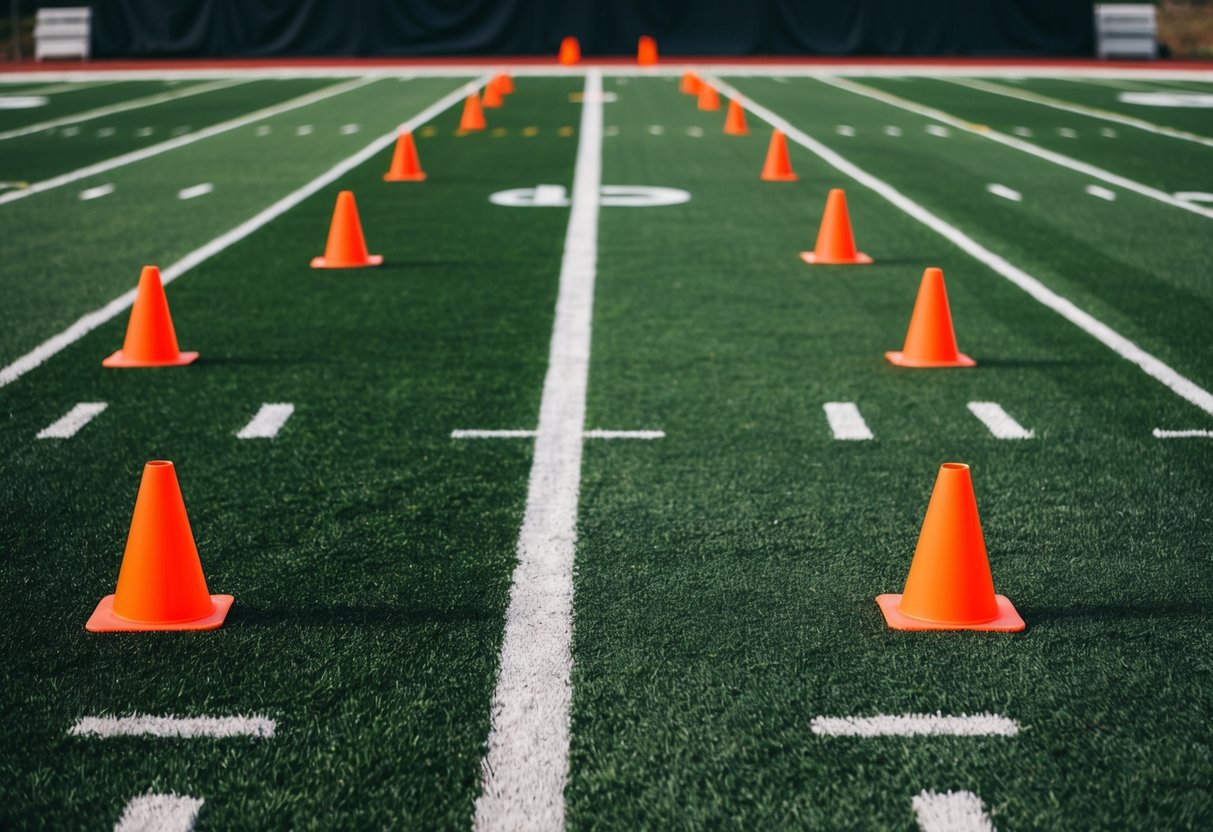
Agility cone drills help improve how quickly you can move, change direction, and react on the field. Each drill uses agility cones to target footwork, speed, and body control so you can become a stronger and faster football player.
Classic Shuttle Drill
The Classic Shuttle Drill, also called the 5-10-5 drill, focuses on quick direction changes and short sprints. Set up three agility cones in a straight line, each five yards apart. Start at the middle cone in a low athletic stance.
When you begin, sprint to the right cone, touch the line, then quickly change direction and sprint all the way across to the left cone. Touch the line again and finish by sprinting back through the middle cone. You’ll use powerful steps, sharp cuts, and quick feet.
This drill is important for building fast twitch muscles and teaching your body how to accelerate and stop under control. It is often used in football combines because it measures how well you can start and stop, just like during a play.
W-Drill for Lateral Movement
The W-Drill works on side-to-side speed, body balance, and smooth turns. Set up five agility cones in a zig-zag or “W” shape, with each cone five yards apart. Start at the first cone and sprint diagonally to the second cone.
Plant your foot and shuffle laterally to the third cone, then cut back diagonally to the fourth, and finally finish by sprinting through the fifth cone. Focus on staying low, keeping quick steps, and driving off your outside foot when you change direction.
This pattern builds lateral quickness, which helps you stay with receivers or react to a running back’s change of path. It also improves your ability to plant and push off without dropping your balance or slowing down.
Zig-Zag Cone Challenge
The Zig-Zag Cone Challenge is good for agility, foot speed, and making sharp cuts. Place six to eight agility cones in a line with each cone spaced about three yards apart, slightly angled to make a zig-zag path.
Start at one end and weave in and out of the cones as fast as you can while keeping tight control of your body. Stay light on your toes, bend your knees, and move your arms for balance. Each turn should be quick and controlled, not sloppy.
You can also use this drill with a football in your hands for added challenge. This helps you practice running with the ball while using your speed and balance to avoid defenders or make quick moves upfield.
T-Drill for Change of Direction
The T-Drill is popular for testing both straight-ahead and lateral movement. Set up four agility cones in a T-shape: one cone is your starting point, one is straight ahead ten yards, and one is five yards left and right from the top cone.
Sprint straight forward from the base to the top of the T, then shuffle sideways to one end, touch the cone, shuffle all the way across to the other end, and finally run back to the start. Make sure to keep your hips low and use fast footwork during the side shuffles.
This drill trains you to move in all directions, which is important for keeping up with the fast pace of football. It helps you react and recover in different situations—whether you’re covering a pass, dodging a defender, or closing in on a ball carrier.
Drill Progressions to Build Speed and Reaction Time
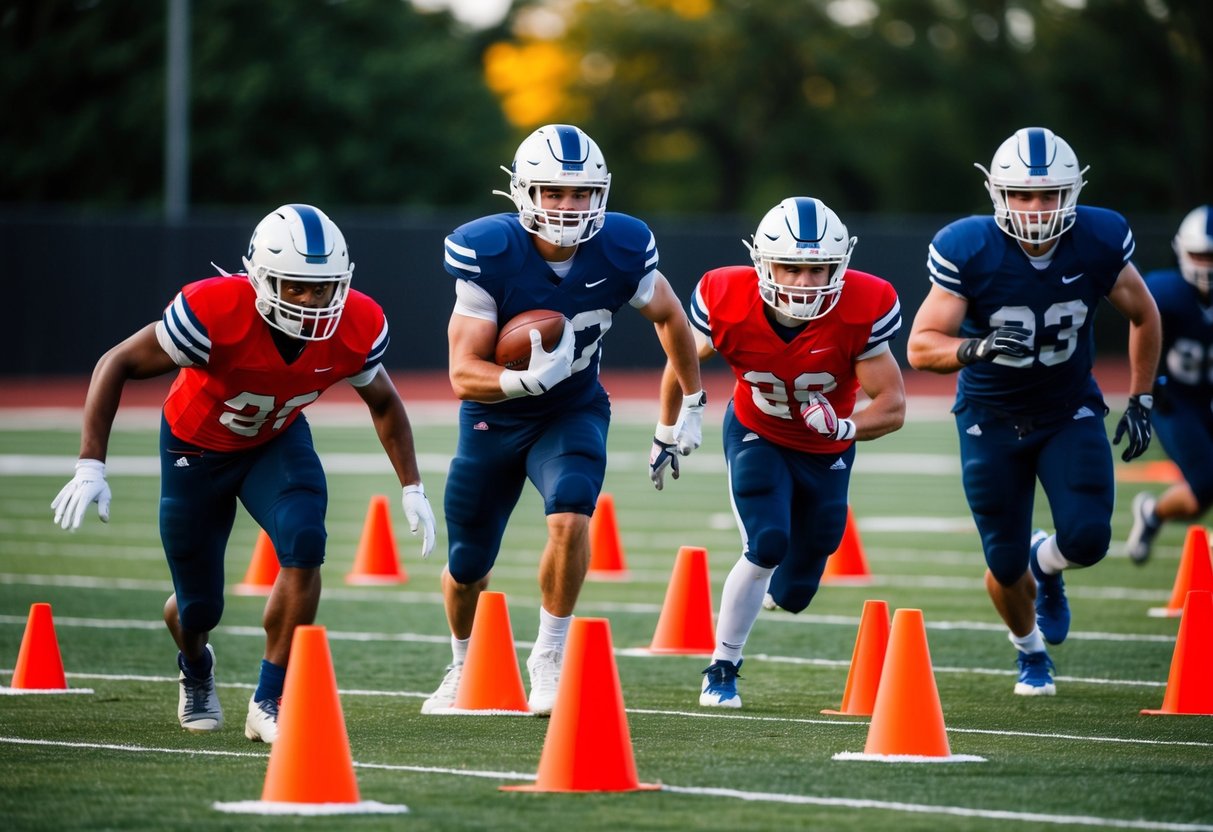
You can improve both your speed and reaction time by using a steady progression of cone drills. Adding a football or any type of ball movement to drills helps connect agility skills directly to game play.
Beginner to Advanced Cone Patterns
Start with simple cone layouts like a straight line or a zig-zag pattern. Focus on basics: sprinting from one cone to the next and making sharp, controlled turns.
As you gain confidence, try more complex patterns. For example:
| Drill Name | Cone Shape | Key Skill |
|---|---|---|
| 3-Cone “L-Drill” | L-shape | Change of direction |
| 5-Cone Star Drill | Star | Multi-directional movement |
| Box Drill | Square | Lateral speed |
Vary your starting stance, speed, and directions. The 3-cone L-Drill requires you to sprint, shuffle, and backpedal, testing your quickness and balance. Add pauses at cones if you want to work on reaction skills.
Incorporating Ball Control
Set a ball at the starting cone. As you weave through cones, dribble, pass, or carry the ball to build footwork and coordination.
Try these variations:
- Dribble a soccer ball or football while moving through an L-drill.
- Receive a pass at a cone, then turn quickly and sprint to the next.
- After rounding the last cone, finish with a shot, catch, or pass.
If you train with a partner, let them call out directions or signals, so you get used to making quick decisions under pressure. This approach strengthens both your reaction time and your control during real football plays.
Coaching Tips for Maximum Improvement
Good coaching helps you get the most out of every agility cone drill. Paying attention to your form and progress gives better results and keeps practices safe and productive.
Common Mistakes to Avoid
Staying too upright is a common problem. Bend your knees and get low to keep your balance and move quickly. If you look only at the cones instead of ahead, you lose awareness and slow down.
Moving too fast at first can make drills sloppy. Focus on control before adding speed. Let athletes use smaller, quick steps rather than large, lunging strides. Rushing through a drill can create habits that are hard to fix later.
List of mistakes to watch for:
- Poor knee bend and posture
- Not using arms for balance
- Ignoring correct foot placement
- Starting drills before understanding the pattern
- Skipping warm-ups
Correcting these mistakes builds strong habits and lowers the risk of injury.
Motivation and Tracking Progress
Staying motivated can make training more fun and effective. Set small goals for each practice, like faster times or smoother footwork. Use a chart or notebook to record your scores and review them each week.
Try using friendly competitions. Let athletes time each other or see how many perfect reps they can finish in a row. Share praise for effort, improvement, and teamwork—not just for being fastest.
Simple progress tracking table:
| Date | Drill Name | Time/Score | Notes |
|---|---|---|---|
| 5/1 | Zig-Zag Run | 12 sec | Smoother turns |
| 5/8 | Ladder Drills | 11 sec | Faster foot speed |
Celebrate small wins and remind yourself improvement takes patience. This keeps everyone encouraged and focused on steady growth.
Frequently Asked Questions
Agility cone drills can help you become quicker on your feet, improve your reaction time, and support football skills at every level. You can use drills made for all ages, from youth to NFL players, to boost your speed and footwork.
What are the best agility cone drills for young football players?
Some great cone drills for kids include the shuttle run, zig zag drill, and the T-drill. These drills work on changing direction and quick bursts of speed.
The zig zag drill helps young players practice cutting and staying low. The shuttle run builds quick feet and endurance for game-time situations.
Where can I find free agility cone drill routines tailored for football training?
Many websites and videos online provide free football-specific cone routines. Search for resources from trusted football camps, coaching clinics, or local youth leagues.
You can also find printable routines shared by football coaches or youth sports blogs.
How can cone drills improve speed and agility in football?
Cone drills train your body to move faster in tight spaces and react quickly on the field. By practicing sharp turns, fast starts, and sudden stops, you improve your footwork and balance.
These drills help your muscles remember how to move correctly, making you more effective during games.
Can you recommend some beginner-friendly cone drills for football athletes?
Beginner drills include the 5-10-5 shuttle, basic ladder drills, and cone hop sprints. The 5-10-5 shuttle uses three cones in a straight line for side-to-side movement.
Cone hop sprints use cones as markers for short sprints and jumps to build coordination.
What are some effective NFL-level cone drills used to enhance agility in football?
NFL-level players often use the 3-cone drill, W-drill, and L-drill. The 3-cone drill focuses on quick turns around cones in a triangle pattern.
The W-drill teaches players to make fast change-of-direction cuts, which are common in receiver and defensive back drills.
How often should I perform agility cone drills for optimal football performance?
Aim to include cone drills two to three times a week in your training plan. Give yourself a day of rest between sessions to recover and avoid overuse injuries.
Start with shorter sessions and increase the intensity as your form and endurance improve.

